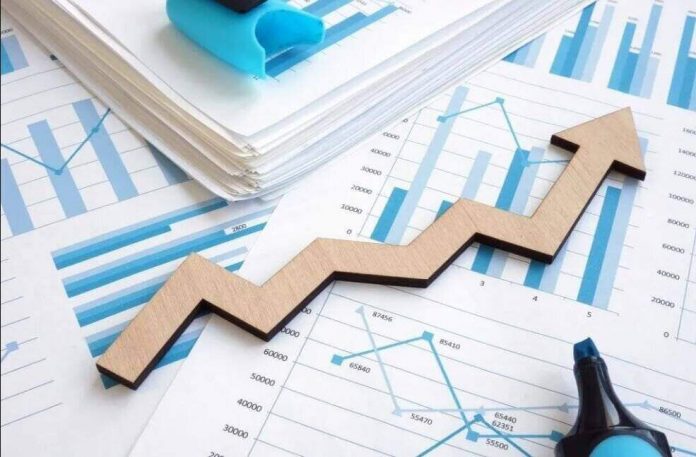CBSE Class 12 Economics Syllabus 2022-2023 is for the annual scheme of assessment. The syllabus remains reduced for the current academic session. Download the new CBSE Class 12 Economics Syllabus in PDF here.
CBSE Class 12 Economics Syllabus 2022-2023: CBSE Class 12 students of commerce stream can check and download the new CBSE Syllabus of Economics here. The board has released the revised CBSE Class 12 Economics Syllabus for the current academic session, 2022-23. This syllabus is in accordance with the annual assessment. Students must go through the full syllabus to know the latest course structure and exam pattern. The details of project work and question paper design can also be checked from this syllabus.
Check CBSE Class 12 Economics Syllabus 2022-23 below:
Also Check CBSE Class 12 Syllabus of All Subjects for 2022-2023 Session (PDF)
Part A: Introductory Macroeconomics
Unit 1: National Income and Related Aggregates (30 Periods)
What is Macroeconomics? Basic concepts in macroeconomics: consumption goods, capital goods, final goods, intermediate goods; stocks and flows; gross investment and depreciation.
Circular flow of income (two sector model); Methods of calculating National Income – Value Added or Product method, Expenditure method, Income method.
Aggregates related to National Income:
Gross National Product (GNP), Net National Product (NNP), Gross Domestic Product (GDP) and Net Domestic Product (NDP) – at market price, at factor cost; Real and Nominal GDP.
GDP and Welfare
Unit 2: Money and Banking (15 Periods)
Money – meaning and functions, supply of money – Currency held by the public and net demand deposits held by commercial banks.
Money creation by the commercial banking system.
Central bank and its functions (example of the Reserve Bank of India): Bank of issue, Govt. Bank, Banker’s Bank, Control of Credit through Bank Rate, CRR, SLR, Repo Rate and Reverse Repo Rate, Open Market Operations, Margin requirement.
Unit 3: Determination of Income and Employment (30 Periods)
Aggregate demand and its components.
Propensity to consume and propensity to save (average and marginal).
Short-run equilibrium output; investment multiplier and its mechanism. Meaning of full employment and involuntary unemployment.
Problems of excess demand and deficient demand; measures to correct them – changes in government spending, taxes and money supply.
Unit 4: Government Budget and the Economy (17 Periods)
Government budget – meaning, objectives and components.
Classification of receipts – revenue receipts and capital receipts;
Classification of expenditure – revenue expenditure and capital expenditure.
Balanced, Surplus and Deficit Budget – measures of government deficit.
Unit 5: Balance of Payments (18 Periods)
Balance of payments account – meaning and components;
Balance of payments – Surplus and Deficit
Foreign exchange rate – meaning of fixed and flexible rates and managed floating.
Determination of exchange rate in a free market, Merits and demerits of flexible and fixed exchange rate.
Managed Floating exchange rate system
Part B: Indian Economic Development
Unit 6: Development Experience (1947-90) and Economic Reforms since 1991: (28 Periods)
A brief introduction of the state of Indian economy on the eve of independence.
Indian economic system and common goals of Five Year Plans.
Main features, problems and policies of agriculture (institutional aspects and new agricultural strategy), industry (IPR 1956; SSI – role & importance) and foreign trade.
Economic Reforms since 1991:
Features and appraisals of liberalisation, globalisation and privatisation (LPG policy); Concepts of demonetization and GST
Unit 7: Current challenges facing Indian Economy (60 Periods)
Human Capital Formation: How people become resource; Role of human capital in economic development; Growth of Education Sector in India
Rural development: Key issues – credit and marketing – role of cooperatives; agricultural diversification; alternative farming – organic farming
Employment: Growth and changes in work force participation rate in formal and informal sectors; problems and policies
Sustainable Economic Development: Meaning, Effects of Economic Development on Resources and Environment, including global warming
Unit 8: Development Experience of India: (12 Periods)
A comparison with neighbours
India and Pakistan
India and China
Issues: economic growth, population, sectoral development and other Human
Development Indicators
Part C: Project in Economics (20 Periods)
Prescribed Books:
1.Statistics for Economics, NCERT 2. Indian Economic Development, NCERT 3. Introductory Microeconomics, NCERT 4. Macroeconomics, NCERT 5. Supplementary Reading Material in Economics, CBSE
Note: The above publications are also available in Hindi Medium.
To Check and download the full syllabus, click on the following link:
For more results, click here







